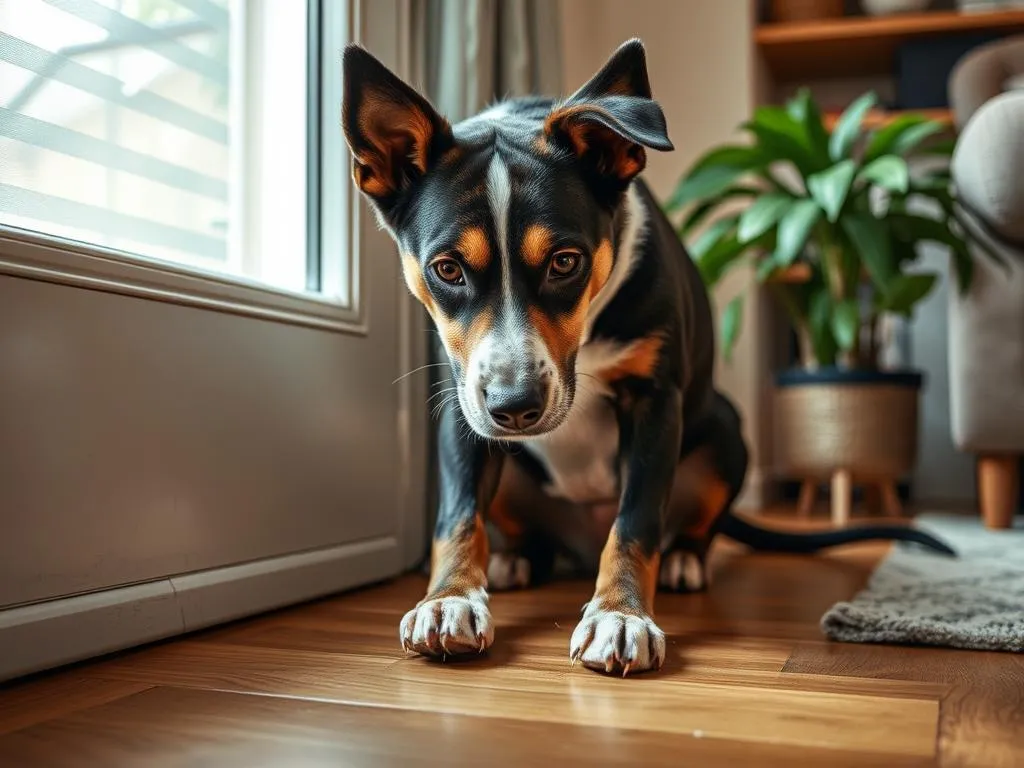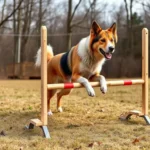
Introduction
For many dog owners, discovering that their beloved pet has marked their territory inside the house can be a frustrating and disheartening experience. How to stop a dog from marking in the house is a common concern that can affect the harmony of your home life. Understanding and addressing this behavior is crucial for maintaining a clean environment and a healthy owner-dog relationship. This article offers effective strategies to prevent and stop marking behavior, ensuring a happier and more peaceful coexistence with your furry friend.
Understanding Dog Marking Behavior
What is Dog Marking?
Dog marking is a behavior where a dog deposits a small amount of urine in specific areas to communicate with others, often to establish territory or convey information about their presence. Unlike regular urination, which typically involves emptying the bladder, marking is characterized by a purposeful and often selective release of urine.
Reasons Dogs Mark in the House
Understanding the reasons behind marking behavior can help owners find effective solutions. Here are some common causes:
- Territorial Behavior: Dogs may mark to assert their territory, especially in homes with multiple pets or when new animals are introduced.
- Stress or Anxiety: Changes in the environment, such as moving to a new home or the arrival of guests, can trigger anxiety and result in marking.
- Medical Issues: Conditions like urinary tract infections can lead to increased urination, which may be misinterpreted as marking.
- Unneutered Males vs. Neutered Males and Females: Unneutered males are more prone to marking behavior due to hormonal influences, but neutered males and even females can mark as well, especially if they feel threatened or anxious.
The Impact of Marking on Dog Owners
The consequences of marking behavior can be significant:
- Damage to Property: Urine can stain and damage carpets, walls, and furniture, leading to costly repairs.
- Odor and Hygiene Concerns: The smell of urine can permeate your living space, creating an unpleasant environment and potential health risks.
- Stress on the Owner-Dog Relationship: Constant marking can lead to frustration and tension between the dog and owner, impacting the bond shared.
Assessing the Problem
Identifying the Triggers
To address marking behavior, it’s essential to identify what triggers it. Common triggers include:
- New Pets: Introducing a new pet can provoke territorial marking.
- Visitors: Guests in the home can cause anxiety, leading to marking.
- Environmental Changes: Changes in routine or environment can upset your dog.
Observing patterns and locations of marking can also provide insights into the underlying causes.
Determining If It’s a Behavioral or Medical Issue
It’s crucial to distinguish between behavioral and medical issues. Signs that may indicate a medical problem include:
- Frequent urination or straining to urinate
- Blood in urine
- Excessive licking of the genital area
If you notice any of these symptoms, it’s essential to consult a veterinarian for a thorough examination.
Preventive Measures
Spaying and Neutering
One of the most effective ways to reduce marking behavior is through spaying or neutering your dog. This procedure can significantly decrease territorial instincts and hormonal urges, especially in males. The ideal timing for spaying/neutering is typically around six months of age, but consult your veterinarian for personalized advice.
Establishing a Routine
Creating a consistent routine can help manage your dog’s bathroom habits. Here are some tips for establishing a structured routine:
- Regular Bathroom Breaks: Take your dog outside at regular intervals, particularly after eating or drinking.
- Scheduled Feedings: Feeding your dog at the same times each day can help regulate their bathroom habits.
Environmental Management
Managing your dog’s environment can also reduce the likelihood of marking:
- Calm Environment: Keep the home environment calm and stable, particularly during stressful events.
- Limit Access to Hotspots: If your dog has marked specific areas, limit their access to those spots until the behavior is under control.
- Use Pet-Safe Cleaning Products: Clean marked areas thoroughly with enzymatic cleaners to eliminate odors that may encourage repeat marking.
Training Techniques to Stop Marking
Basic Commands and Reinforcement
Teaching your dog basic commands such as “sit,” “stay,” and “leave it” can alleviate anxiety and establish a stronger bond. Positive reinforcement—rewarding desired behaviors with treats or praise—can encourage your dog to respond better to commands.
Redirecting Behavior
It’s possible to redirect marking behavior by providing appropriate outlets for your dog’s territorial instincts. Consider:
- Designated Marking Area: If your dog feels the need to mark, take them to a specific outdoor spot where they are allowed to do so.
- Engaging Activities: Providing toys and engaging activities can help redirect your dog’s focus away from marking.
Using Crates Effectively
Crate training can be an effective way to prevent marking behavior. A crate provides a safe space for your dog and can limit their access to areas where they tend to mark. Here are some tips for crate training:
- Introduce the Crate Gradually: Allow your dog to explore the crate without pressure.
- Use Positive Reinforcement: Encourage your dog to enter the crate by using treats and praise.
- Never Use the Crate as Punishment: This can create negative associations with the crate, making it less effective.
Behavior Modification Strategies
Desensitization and Counter-Conditioning
Desensitization and counter-conditioning techniques can help reduce anxiety-related marking. This process involves gradually exposing your dog to the triggers that cause marking while associating positive experiences with those triggers. Here’s how to implement these techniques:
- Identify Triggers: Determine what causes your dog to mark.
- Gradual Exposure: Introduce your dog to the trigger at a distance where they remain calm.
- Positive Reinforcement: Reward your dog with treats and praise for remaining calm in the presence of the trigger.
Professional Training and Behaviorists
If marking behavior persists despite your efforts, it may be time to seek help from a professional dog trainer or behaviorist. They can provide personalized strategies and support. Various types of training programs are available, including:
- Group Classes: These classes can help with socialization and basic obedience.
- Private Training Sessions: One-on-one training can address specific issues more effectively.
Monitoring Progress
Keeping a Journal
Tracking your dog’s progress can help you identify patterns and assess the effectiveness of your strategies. Consider noting:
- Incidents of Marking: Document when and where marking occurs.
- Triggers: Record any potential triggers associated with marking incidents.
- Training Sessions: Keep track of training methods used and their outcomes.
Adjusting Strategies as Needed
As you monitor your dog’s behavior, it’s essential to recognize when a particular strategy isn’t working. Be flexible and willing to modify your approach based on your dog’s response. This might involve:
- Trying Different Techniques: If one method isn’t effective, consider exploring alternative training techniques or routines.
- Seeking Additional Resources: Look for books, videos, or courses that offer new insights into dog training.
Conclusion
Addressing marking behavior in dogs is a multifaceted approach that requires understanding, patience, and consistency. By implementing preventive measures, utilizing effective training techniques, and monitoring your dog’s progress, you can successfully reduce or eliminate this behavior. Remember to be patient with your furry friend, as behavior modification takes time. Ultimately, understanding and addressing marking behavior can lead to a more harmonious home and a stronger bond between you and your dog.









